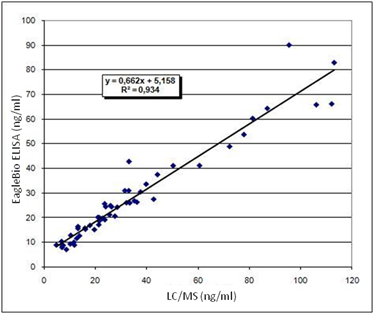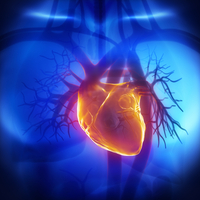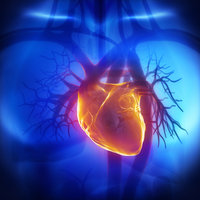

ACTH (Adrenocorticotropic Hormone) is secreted from corticotropes in the anterior lobe
of the pituitary gland in response to cortocotropin-releasing hormone (CRH)
released by the hypothalamus.
ACTH is an important component of
the hypothalamic-pituitary-adrenal (HPA) axis.
The HPA axis is critical in maintaining homeostasis under physical and
psychological stress by controling cortisol levels in the body and producing
ACTH in response to such stress.
ACTH stimulates secretion of
glucocorticoid steroid hormones from adrenal cortex cells, particularly in the
zona fasciculata of the adrenal gland. ACTH acts by binding to cell surface
ACTH receptors, which are located predominantly on adrenocortical cells of the
adrenal cortex.
Reasons to Measure
ACTH:
ACTH blood levels are measured to help detect abnormal cortisol concentrations
(elevated or deficient) in the body which can cause a variety of
diseases/conditions. Thus, ACTH
measurements are important for numerous diagnoses and consequential monitoring.
Increased Levels of
ACTH
1. Addison’s disease –
Primary adrenal insufficiency resulting from adrenal cortex
hyofunction/dysfunction, a deficient production of glucocoticoids, mineralocorticoids
and androgens, and with increased levels of both ACTH and plasma renin
activity.
2. Congenital adrenal hyperplasia (CAH)-
Endocrine system disease that can cause development of masculine traits in
female fetuses, otherwise known as virilization.
3. Cushing’s syndrome-
Endogenous
hypercortisolism, resulting from an excess in corticotropin (ACTH) secretion by
tumors in the pituitary gland or elsewhere. Symptoms include abnormal fat
distribution, predominantly in the supraclavicular and temporal fossae. Other symptoms or clinical presentations of
this condition, include proximal muscle fatigablility weakness, wide stretch
marks, easy bruising, and decreased linear growth coupled with continued weight
gain in a child.
4. Cushing’s disease-
Cushing’s disease is the most common form of endogenous
Cushing’s syndrome, caused by a tumor in the pituitary gland. This tumor is a build up of abnormal cells
that secrete ACTH in excessive amounts which in turn, induces adrenal glands to
produce too much cortisol and consequently causes the clinical manifestations
and symptoms as mentioned above for Cushing’s syndrome.
5. Muliple endocrine neoplasia (MEN), type I
A genetic, endocrine disease that
involves formation of a tumor or overactivity of one or more of the endocrine
glands such as the pancreas, parathyroid, or pituitary gland. Clinical manifestations vary depending on the
gland involved in the patient but can include all of the following:
hyperparathyroidism, hypercalcemia, pancreatic islet cell tumors, hypoglycemia, peptic
ulcers, and pituitary tumors.
Decreased Levels of
ACTH:
6. Hypopituitarism and/or secondary adrenal insufficiency
Secondary adrenal insuffiency is caused by impairment of the pituitary
gland or
or failure of the hypothalamus to stimulate pituitary ACTH production. Impairment/disease of the pituitary gland hinders the
release of ACTH and thus can distrupt several of your body’s important functions,
such as growth, blood pressure and reproduction.
7. Adrenal gland tumor
Cancerous or benign tumor of either of the adrenal glands, the adrenal
cortex or the adrenal medulla that can be functioning (overproduce hormones) or
non-functioning (does not produce hormones).
The adrenal cortex is the outer part of the
adrenal gland and it produces the steroid hormones: cortisol, aldosterone, and
dehydroepiandrosterone (DHEA). Tumors of the adrenal cortex are adenoma
(non-functioning) and adrenocortical carcinoma (functioning and non-functioning).
The adrenal medulla is the inner part of the
adrenal gland and it produces three different hormones, also referred to as
catecholamines: epinephrine, norepinephrine, and dopamine. Tumors of the
adrenal medulla are neuroblastoma (functioning and non-functioning) and
pheochromocytoma (functioning).
Adrenal tumors can cause excessive production of cortisol thereby
decreasing the levels of ACTH. Symptoms
and clinical manifestations vary depending on the type and location of the
adrenal tumor (cortex or medulla).
8. Other tumors that produce cortisol
Tumors such as lung cancer, can produce ACTH which cause the
adrenal gland to overproduce steroid hormones:
- Islet cell tumors of the pancreas
- Small cell tumors of the lung and benign carcinoid tumors of
the lung
- Medullary carcinoma of the thyroid
- Tumors of the thymus gland
ACTH producing tumors as mentioned directly above, cause Ectopic ACTH syndrome
which has similar but fewer symptoms than that of the classic Cushing’s syndrome.
References:
1. Betterle, C. et al. “Autoimmune Addison’s disease.” Endocrine Development 2011;20:161-72. doi: 10.1159/000321239.
2.Carney, J. A. “Familial multiple endocrine neoplasia syndromes: components, classification, and nomenclature.” Journal of Internal Medicine, 1998; 243: 425–432. doi: 10.1046/j.1365-2796.1998.00345.x
3. Chakrabarty, A. et al. “Correcting hypothalamic-pituitary-adrenal axis dysfunction using observer-based explicit nonlinear model predictive control,” Engineering in Medicine and Biology Society (EMBC), 2014 36th Annual International Conference of the IEEE: 3426-3429, doi: 10.1109/EMBC.2014.6944359
4. Charmandar, Evangelia et al. “Adrenal insufficiency.”The Lancet 2014; 383 (9935): 2152 – 2167. doi: 10.1016/S0140-6736(13)61684-0.
5. Dreger, A. et. al. “Prenatal Dexamethasone for Congenital Adrenal Hyperplasia: An Ethics Canary in the Modern Medical Mine.” Journal of Bioethical Inquiry 2012;9(3):277-294. doi:10.1007/s11673-012-9384-9.
6. Hershel, Raff et al. “Cushing’s syndrome: from physiological principles to diagnosis and clinical care.”The Journal of Physiology 2015; 1469-7793. doi: 10.1113/jphysiol.2014.282871
7. Massachusetts General Hospital. “Cushing syndrome.”2007. www.;mgh.harvard.edu
8. Nieman, Lynnette K. et al. “Evaluation and treatment of Cushing’s syndrome.”The American Journal of Medicine 2005; 118(12): 1340 – 1346.
9. PennState Hershey Medical Center. “Ectopic Cushing Syndrome.” 2013.
10. Prevedello, D. et al. “Diagnosing, managing Cushing’s Disease: a multidisciplinary overview.” Review of Endocrinology; 2009. 19-24.
11. Ten, S. et al. “Addison’s Disease.” The Journal of Clinical Endocrinology & Metabolism 2001; 86(7): 2909-2922. doi:10.1210/jcem.86.7.7636
Related Kits:
ACTH ELISA




















